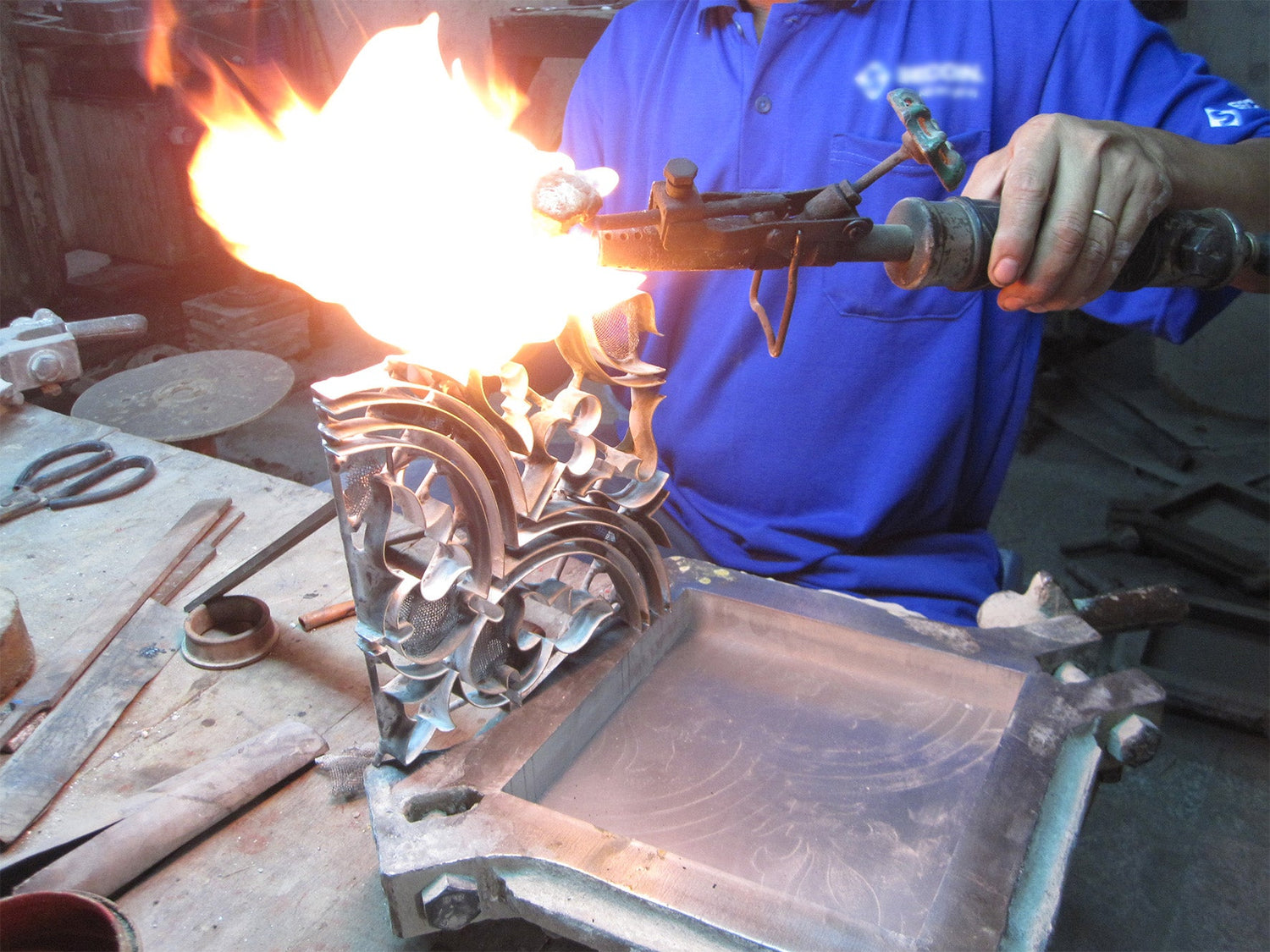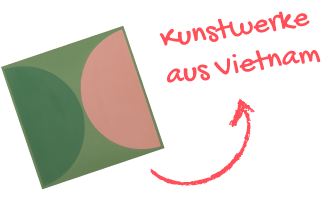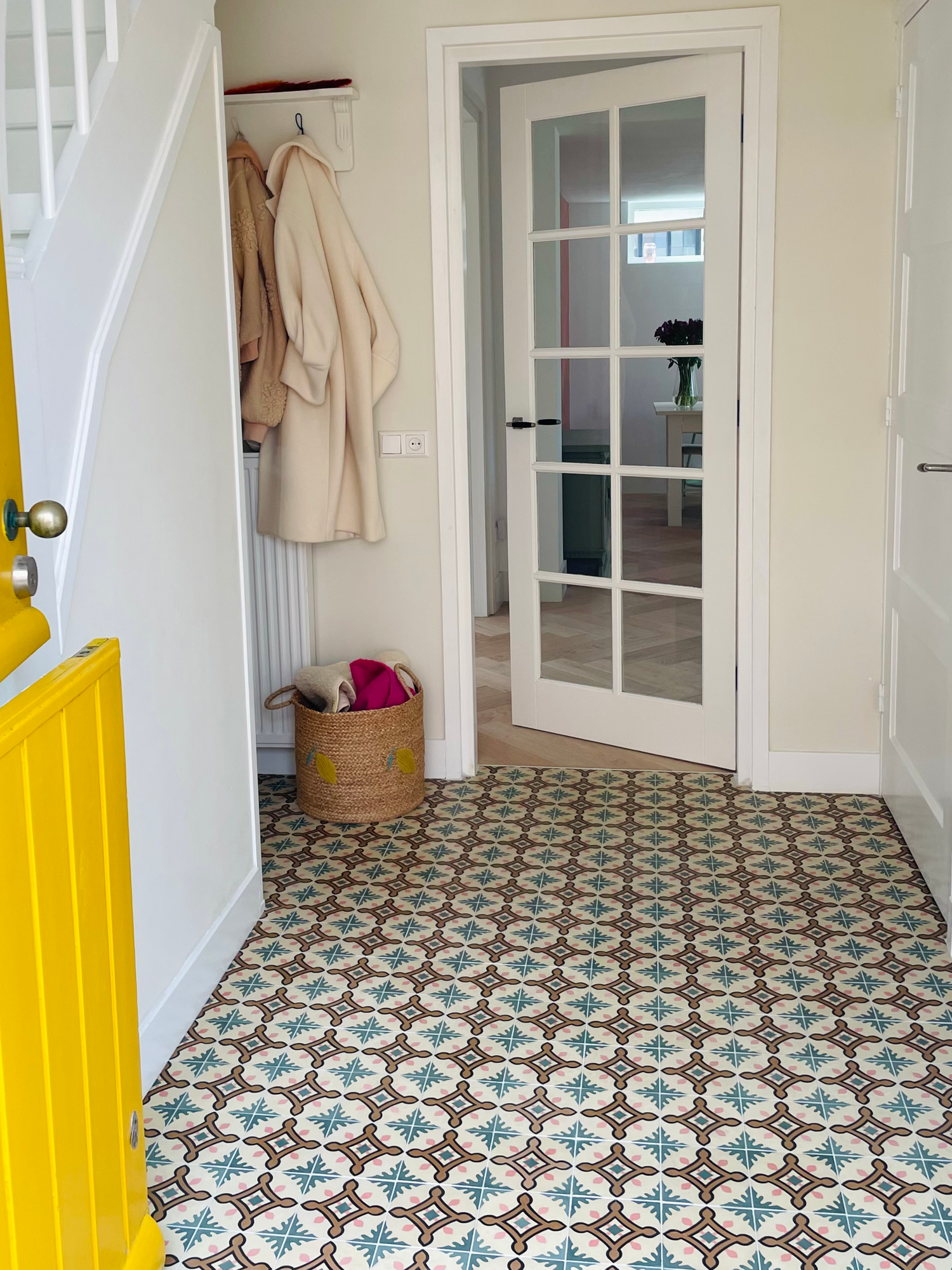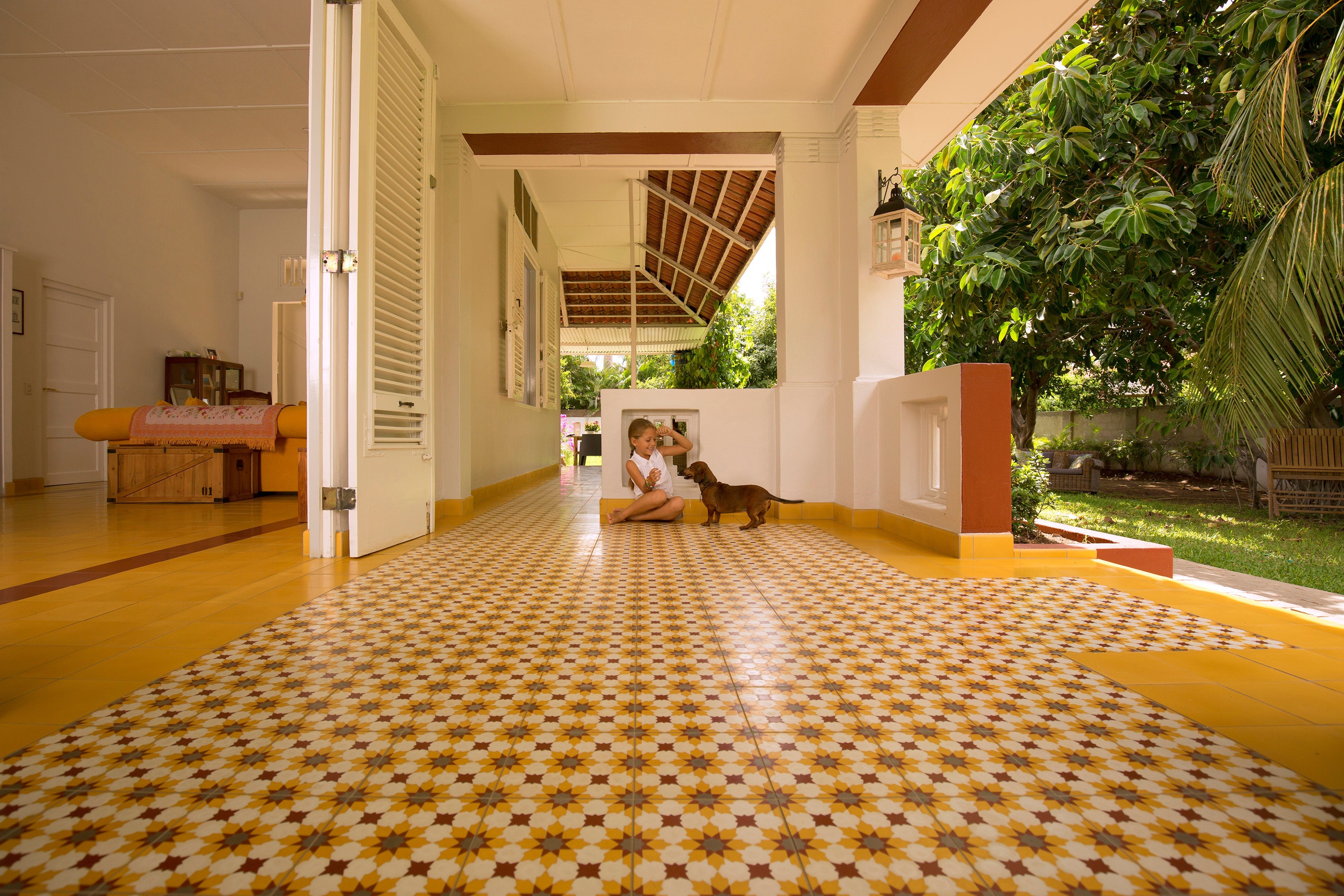Inspiration Gallery
Plastering and treatment
To the instructional videos
Inspiration Guide
Introduction of cement tiles
-
Cement tiles, also known as Portuguese tiles or patterned tiles, are handmade tiles made from cement and pigments. Are you looking for a tile to enhance your home or garden? Portuguese tiles are suitable for indoor and outdoor use, for floors and walls. Does the Portuguese tile suit your home?
-
These tiles are most famous for their use in mansions of the 1920s, but their colorful patterns also suit other interior styles, such as country, bohemian, or Scandinavian. Are you looking for a tile to enhance your bathroom, hallway, toilet, or kitchen? Then the Portuguese tile is perfect.
History of cement tiles
-
Cement, pigment, water, time, and patience: With these ingredients, you can create a decorated cement tile, just as the Moors did ten centuries ago. Although manufacturing techniques have been refined over the years, craftsmanship and eco-friendliness remain at the heart of the process. Europeans learned the art of making colorful cement tiles from the Moors, who poured colored marble powder into a mold, sprinkled cement over it, and compacted the mixture into a solid tile for floors and walls. The Moors brought these techniques to Spain when they conquered the country in 711, and their influence is still visible in cities like Córdoba, Seville, and Granada, with the Alhambra Palace being the pinnacle of Moorish-Arabic architecture. The walls of this building are decorated with countless colorful tiles. Although cement tiles fell out of fashion after the expulsion of the Moors in 1492, they were rediscovered in the 19th century by archaeologists who revived interest in Arabic patterns rich in geometry, calligraphy, and flowers. Today, cement tiles are once again popular, both in historical and modern architecture. New designers in the Mediterranean have taken the basics of these designs and adapted them to their own cultural tastes, leading to a renewed appreciation for this unique form of craftsmanship.
-
Art Nouveau : At the end of the 19th century, cement tiles were particularly popular among Barcelona's high society, and Antonio Gaudí was one of the most important designers of the Art Nouveau movement. Gaudí designed an apple-green hexagonal tile for the Casa Milà, and cement tiles were popular during this period.
increasingly popular in Spain and Southern Europe.
Twentieth century : At the beginning of the 20th century, cement tiles were the most popular flooring in the Mediterranean region, including North Africa, France, Spain, Portugal, and Italy. They spread throughout the former European colonies and worldwide. This heyday ended in the 1950s, when cheaper industrial materials such as granite, ceramic
and plastic were preferred.
Century : At the beginning of the 21st century, demand for authentic and durable products such as cement tiles is increasing. This is seen as a response to the technological age, in which industrial materials often cause environmental damage. Cement tiles are produced without heating and with environmentally friendly ingredients, and more and more designers are valuing them for their quality and decorative value.
Origin and quality
-
Our cement tiles, also called sample tiles, originally come from Morocco, where we began production in 2006. We later discovered that cement tiles are also produced in Vietnam, and of a quality far superior to that from Morocco. Vietnamese tiles have a smoother and shinier surface and are more stable, thanks to the high-quality raw materials, often imported from Germany, and the pressing techniques. Vietnam, once a French colony, received tile presses in the past.
-
from France for production. After the communist transition, factories had to compete with each other, which led to further perfection of techniques and exceptional quality. We decided to source our cement tiles exclusively from Vietnam; production costs are similar to those in Morocco, but the quality is significantly better. The only drawback is that Vietnam is further away, so delivery times are sometimes longer.
-
factories
Over the years, we have worked with several factories in Vietnam, which led to slight color differences in the tiles. To resolve this issue, we initiated discussions with the largest factory, which had both the capacity and expertise to meet our requirements. We made clear agreements on delivery times and quality, supported by ISO certification. This has led to streamlined production with virtually no color differences, and deliveries usually arrive in the Netherlands on time, with few exceptions. We regularly visit our factory in Vietnam. It's a true pleasure to be in Vietnam! The employees work in a clean, well-ventilated environment, and management ensures excellent working conditions. They eat lunch together and benefit from a shared health insurance plan, to which we also contribute. The employees are cheerful and have a positive attitude toward their work. They can work in peace, without the noise and pressure often found in Europe, allowing them to passionately produce our beautiful Azule pattern tiles. Child labor is strictly prohibited; In Vietnam, a lot is being done to give children a bright future. Moreover, it takes years to acquire the skills required to make cement tiles!
-
Raw materials
A cement tile consists of three main components: cement, pigment (marble dust), and water. The pigments used in this process are organic and pressed under high pressure. The manufacturing process is a cold process. This means no heat treatment is required, making the process not only energy-efficient but also environmentally responsible. The water needed to cure the tiles is reused. A water treatment plant has been installed outside the factory that purifies the used water on the factory premises itself, thus minimizing water waste. No material is wasted either; damaged tiles are donated to local schools for mosaic projects or used as gravel for paving. Tiles with color differences or production defects are also brought to the local market, where they are donated to schools, orphanages, and public institutions. The entire production process, the raw materials used, and the working conditions are sustainable and socially responsible—something we at Designtegels.nl BV fully support and promote wherever possible. After seeing the production process, you'll understand why these artfully handcrafted tiles are worth their price. After all, each tile is individually handcrafted, making it unique.





